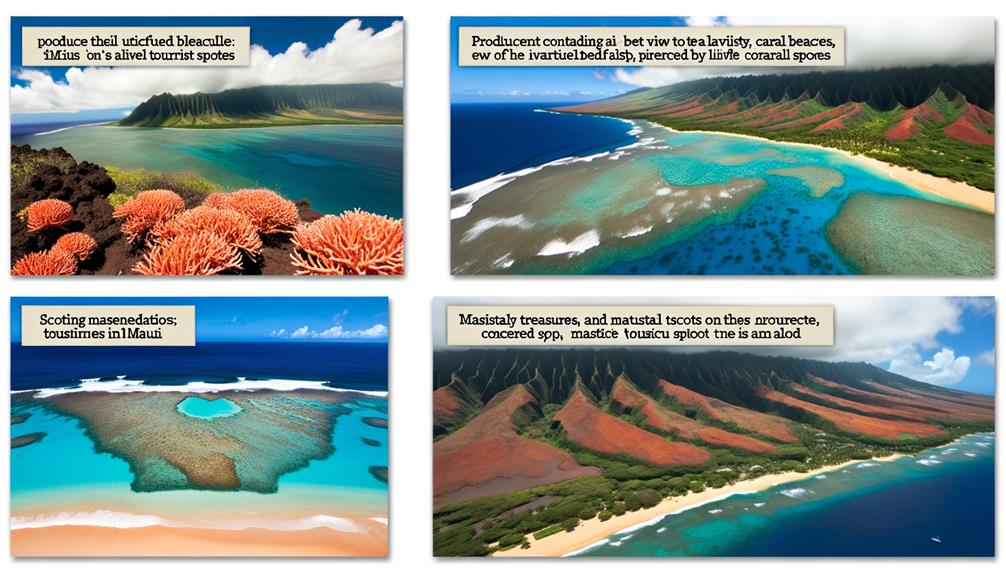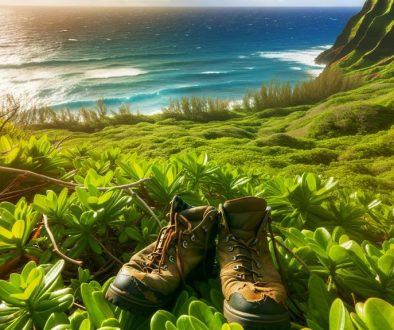The Ultimate Guide to the Best Marine Wildlife Identification Card for Whale Watching
So, you've decided to embark on a whale-watching adventure, hoping to catch a glimpse of these majestic creatures in their natural habitat.
But here's the thing: how do you know which identification card is the best companion for your journey? Well, fear not, as we've got you covered.
In this ultimate guide, we'll explore the factors to consider when choosing a marine wildlife identification card specifically tailored for whale watching. From card design options to species coverage and durability, we'll walk you through everything you need to make an informed decision.
But hold on, because the secrets to finding the perfect card are about to be revealed. Get ready to unlock the door to an ocean of knowledge.
Key Takeaways
- Visually appealing and easy to read designs enhance the overall whale watching experience.
- Durability and waterproofing are important to ensure the cards can withstand exposure to water and last throughout the trip.
- Compact and portable cards make it convenient to handle and carry during whale watching trips.
- Species coverage, clear and accurate information, and thought-provoking images contribute to a deeper appreciation for marine wildlife and the need for conservation efforts.
National Geographic The Photo Ark Book
The 'Marine Wildlife Identification Card for Whale Watching' is the perfect choice for nature enthusiasts and whale watchers looking to identify marine wildlife with ease.
When it comes to learning about animals and their surroundings, the 'National Geographic The Photo Ark Book' is a must-have. This coffee table book showcases stunning pictures of wildlife from around the world, capturing the beauty of nature in intricate detail. With explanations accompanying the photographs, it provides valuable insights into the animals featured. You'll be captivated by the breathtaking images, and children especially will find them thought-provoking.
The book also highlights endangered species, raising awareness about their plight and the importance of conservation. Joel Sartore's mission to document endangered species through photography is truly inspiring, and watching the associated videos further enhances the experience. The book has received international acclaim, loved by readers of all ages and backgrounds.
For animal lovers, photography enthusiasts, and those interested in conservation, 'National Geographic The Photo Ark Book' is a powerful reminder of the beauty and significance of animals in our world.
Best For: Nature enthusiasts, animal lovers, and photography enthusiasts.
Pros:
- Stunning and breathtaking photographs of wildlife from multiple countries.
- Valuable insights and explanations about the animals and their surroundings.
- Raises awareness about endangered species and the importance of conservation.
Cons:
- May be expensive due to the significant price difference for non-English versions.
https://www.amazon.com/dp/1426217773?tag=mauinow-20
Factors to Consider When Choosing Marine Wildlife Identification Cards for Whale Watching



When choosing a marine wildlife identification card for whale watching, there are several factors you should consider.
First, look at the card design options available and choose one that's visually appealing and easy to read.
Next, consider the species coverage provided by the card to ensure it includes the whales you're likely to encounter.
Card Design Options
Consider various factors when choosing marine wildlife identification cards for whale watching, such as their design options. The design of the card is crucial as it enhances the overall experience and usability.
Look for cards that feature clear and high-quality photographs of different whale species. These photographs should capture the unique characteristics and markings of each whale, allowing for easy identification.
Additionally, consider cards that provide detailed information about the whales, including their behavior, habitat, and conservation status. This information won't only help you identify the whales but also deepen your understanding of their lives.
Furthermore, opt for cards that have a user-friendly layout, with clear labeling and organized sections. A well-designed card will enable you to quickly locate the information you need, making your whale watching experience more enjoyable and educational.
Species Coverage
To ensure comprehensive species coverage while choosing marine wildlife identification cards for whale watching, it's important to consider the diversity of wildlife from multiple countries featured in the cards. The book encompasses wildlife from various nations, providing a wide range of species coverage.
It not only showcases photos of different species but also includes explanations of some animals, ensuring a comprehensive understanding for educational purposes. Moreover, the book features portraits of endangered animals, shedding light on the need for conservation efforts and contributing to a broader understanding of species coverage in need.
The images are thought-provoking, especially for children, expanding their exposure to different species and fostering a deeper appreciation for marine wildlife.
Durability and Waterproofing
Now let's turn our attention to the durability and waterproofing of marine wildlife identification cards for whale watching, crucial factors to consider when selecting the right cards for your adventure.
When you're out on the water, you need a card that can withstand the elements and last throughout your trip. Look for cards made from durable materials, such as waterproof plastic or laminated paper, that can resist tearing or fading.
These cards should also be able to withstand exposure to water, ensuring that they remain usable even if they get wet. Waterproofing is particularly important as it protects the card from damage caused by splashes, rain, or accidental drops into the water.
Choosing a marine wildlife identification card that's both durable and waterproof will ensure that you can rely on it throughout your whale watching experience.
Size and Portability
Are you looking for a marine wildlife identification card for whale watching that's compact and easy to carry during your trips?
When choosing a marine wildlife identification card, one important factor to consider is its size and portability. It's essential to opt for cards that are compact and lightweight, making them easy to handle and carry during your whale watching adventures.
Whether you're on a boat or moving to different observation spots, having a card that's portable can greatly enhance your experience. Additionally, it's crucial to choose cards that are easy to handle in varying weather conditions, ensuring that you can quickly reference and identify the marine wildlife you encounter.
Clear and Accurate Information
When selecting a marine wildlife identification card for whale watching, it's crucial to prioritize clear and accurate information about the featured animals and their environments.
The book provides detailed and accurate explanations of the featured animals and their habitats, ensuring that you have reliable information at your fingertips. Additionally, the photographs in the book offer clear and accurate depictions of the wildlife, making it educational and informative.
It not only showcases the beauty of these creatures but also presents a clear and accurate portrayal of endangered animals and the need for their conservation. The international reception of the book further highlights its ability to provide clear and accurate information that resonates with readers from different countries.
Availability and Affordability
As you consider marine wildlife identification cards for whale watching, one important factor to take into account is the availability and affordability of the options.
When it comes to availability, it's crucial to check if the card is available in your country or region. The English version is usually more widely available than other language options.
Additionally, consider the affordability of the card, especially if you're purchasing it as a gift or for a larger group of people. Look for any potential discounts or promotions that may be available when purchasing the card. It's also worth exploring different purchasing options to find the most affordable one.
Frequently Asked Questions
How Can I Contribute to National Geographic's Photo Ark Project?
To contribute to National Geographic's Photo Ark project, start by researching the project and its goals.
Next, consider donating to support the project financially, or volunteering your time and skills to assist with their initiatives.
Additionally, you can participate by sharing information about the project with your friends and family, and spreading awareness through social media.
Lastly, consider submitting your own wildlife photographs to the project, helping to document and protect endangered species around the world.
Are There Any Recommended Apps or Online Resources for Marine Wildlife Identification?
Looking for apps or online resources to identify marine wildlife? There are plenty of options out there.
You can download apps like Whale Alert or iNaturalist, which provide detailed information and identification guides.
Additionally, websites like the National Oceanic and Atmospheric Administration (NOAA) and the Marine Conservation Society offer online resources with images and descriptions to help you identify different species.
Can Marine Wildlife Identification Cards Be Used for Purposes Other Than Whale Watching?
Marine wildlife identification cards aren't just limited to whale watching. They can be used for a variety of purposes such as research, education, and conservation efforts.
These cards provide valuable information about different marine species, including their physical characteristics, behavior, and habitat. Whether you're a marine biologist, a student, or simply a nature enthusiast, having a marine wildlife identification card can enhance your understanding of the diverse marine life and help you appreciate the importance of protecting our oceans.
What Are Some Common Mistakes to Avoid When Using Marine Wildlife Identification Cards?
When using marine wildlife identification cards, it's important to avoid common mistakes.
One mistake to steer clear of is relying solely on the picture to identify the animal. Take note of the written description as well.
Another mistake is assuming that the card includes every species you might encounter. It's always best to research the specific region you'll be in to ensure accuracy.
Lastly, don't forget to update your card regularly to include new species and information.
Are There Any Specific Regulations or Guidelines for Whale Watching That I Should Be Aware Of?
Are there any specific regulations or guidelines for whale watching that you should be aware of?
Yes, there are. When it comes to whale watching, it's important to follow certain rules to ensure the safety and well-being of the whales.
For example, you should keep a safe distance from the whales, avoid approaching them directly, and never feed or touch them. It's also crucial to be mindful of any local regulations or guidelines that may exist in the area you're whale watching in.
Conclusion
So there you have it! The ultimate guide to finding the best marine wildlife identification card for your whale watching adventures.
Remember, as the saying goes, 'A picture is worth a thousand words.' With the National Geographic The Photo Ark Book and considering important factors, you'll be equipped with the knowledge to identify and appreciate the magnificent creatures you encounter in the ocean.
Happy whale watching!








